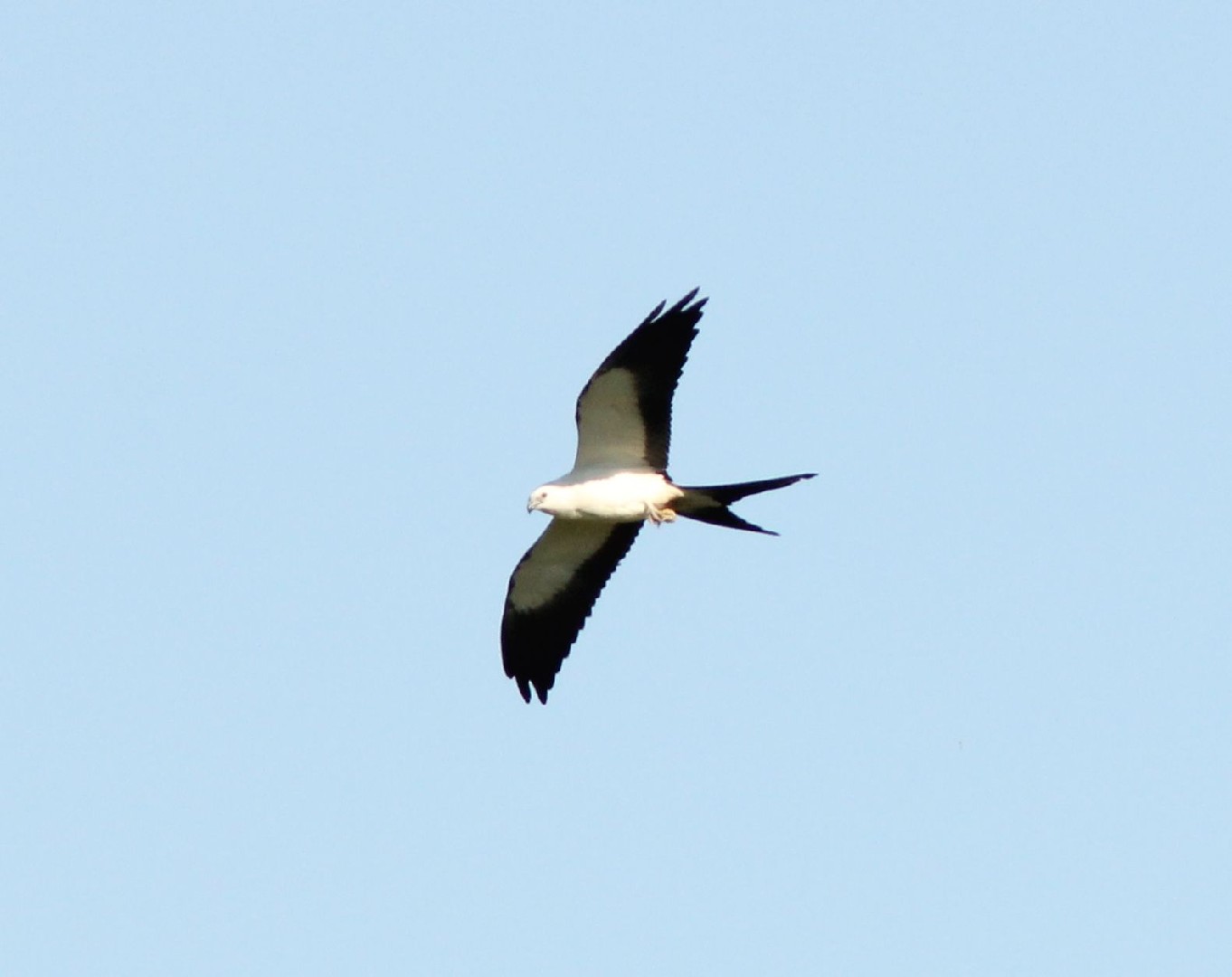Swallow-tailed Kite
A species of Swallow-tailed Kites, Also known as Swallow-tailed Hawk Scientific name : Elanoides forficatus Genus : Swallow-tailed Kites
Swallow-tailed Kite, A species of Swallow-tailed Kites
Also known as:
Swallow-tailed Hawk
Botanical name: Elanoides forficatus
Genus: Swallow-tailed Kites
Content
Description People often ask General Info
 Photo By Caleb Putnam , used under CC-BY-SA-2.0 /Cropped and compressed from original
Photo By Caleb Putnam , used under CC-BY-SA-2.0 /Cropped and compressed from original Description
The species is 50 to 68 cm (20 to 27 in) in length, with a wingspan of approximately 1.12–1.36 m (3.7–4.5 ft). Male and female individuals appear similar. The body weight is 310–600 g (11–21 oz). The body is a contrasting deep black and white. The flight feathers, tail, feet, bill are all black. Another characteristic is the elongated, forked tail at 27.5–37 centimetres (10.8–14.6 in) long, hence the name swallow-tailed. The wings are also relatively elongated, as the wing chord measures 39–45 cm (15–18 in). The tarsus is fairly short for the size of the bird at 3.3 cm (1.3 in). Young swallow-tailed kites are duller in color than the adults, and the tail is not as deeply forked. 
Size
48-64 cm (19-25 in)
Life Expectancy
6 years
Nest Placement
Tree
Clutch Size
1 - 3 eggs
Number of Broods
27 - 33 days
Nestling Period
35 - 42 days
Feeding Habits
Swallow-tailed Kite predominantly feed on flying insects. They supplement their diet with small vertebrates, particularly during breeding season, preying upon lizards, tree frogs, nestling birds, and snakes. Occasionally, they consume bats, small fish, and fruit. They are adept at hunting while flying, gleaning prey from vegetation around wetlands. The male delivers food to the nest, where the female prepares it for the nestlings. Stinging insects like wasps and ants are also crucial to their diet.
Habitat
Swallow-tailed Kite's habitat includes wetland ecosystems such as swamps, lowland forests, and marshes, favoring areas with tall trees for nesting. These birds seek environments that offer both dense and open spaces, complementing their diet of small prey. Typically found at low altitudes but adaptable up to high humid elevations, swallow-tailed Kite migrates to similar habitats in South America during the winter.
Nest Behavior
Swallow-tailed Kite pairs may build anew or refurbish abandoned nests each year, with construction taking from a day up to two weeks. Both male and female contribute to nest-building, followed by egg-laying and shared parental care.
Nest Characteristics
Swallow-tailed Kite establishes its nests in open woodlands or tree stands, preferring exposed locations near the apex of tall trees. These nests are composed of small sticks, cypress or pine, interwoven with lichens and Spanish moss. They measure 12-25 inches wide and have a height of 5-12 inches, with a flat or shallow cup-shaped surface.
Dite type
Insectivorous
General Info
Feeding Habits
Bird food type
Sounds
Call
Recording location: Argentina
Call
Recording location: Bolivia
Behavior
Swallow-tailed Kite spend the majority of their time aloft, where they exhibit exceptional aerial agility, capturing prey on the wing without needing to flap extensively. The species is adapted for soaring and adeptly maneuvers using their distinctive forked tails. Vocalizations become prominent when swallow-tailed Kite are disturbed or engaged in intraspecific conflicts. Demonstrating monogamy, breeding pairs often form during migration or maintain bonds across seasons. They defend compact nesting territories by performing silent circling flights overhead, vigorously chasing trespassers with loud calls. 'Neighborhood' nesting allows for social interaction, and even nonbreeders participate in the community by offering food and nesting material, although such overtures are typically rejected by nesting females. In addition to nesting in close proximity, swallow-tailed Kite also tend to roost communally, sometimes in large congregations, especially as they prepare for migration.
Species Status
Swallow-tailed kites are not listed as endangered or threatened by the federal government in the United States. They are listed as endangered by the state of South Carolina and as threatened by the state of Texas. They are listed as "rare" by the state of Georgia. The Center for Birds of Prey in Charleston, SC has an ongoing effort to track sightings within the state. Anonymous reports can be made at https://stki.thecenterforbirdsofprey.org or by telephone. They will also send you the summary of the years reported sightings if you leave them your contact information. Destruction of habitats is chiefly responsible for the decline in numbers. A key conservation area is the Lower Suwannee National Wildlife Refuge in Florida. As of 2016, populations have seemed to stabilize and even show increasing trends. Successful habitat restoration and management has allowed these birds to reestablish nesting populations in areas of Georgia, Florida, and South Carolina. 